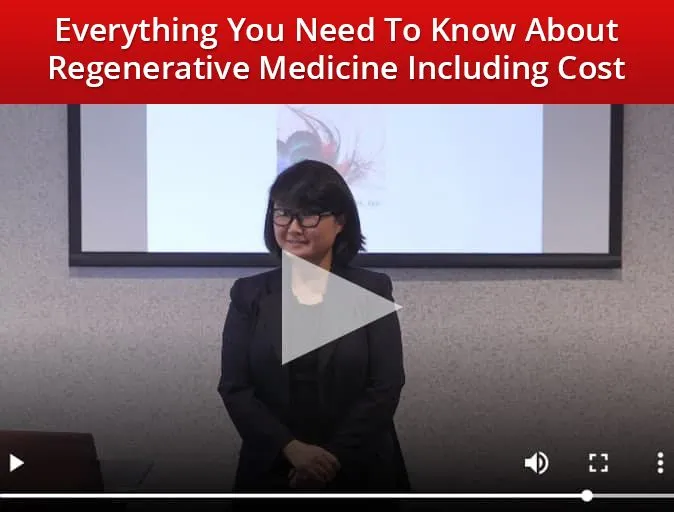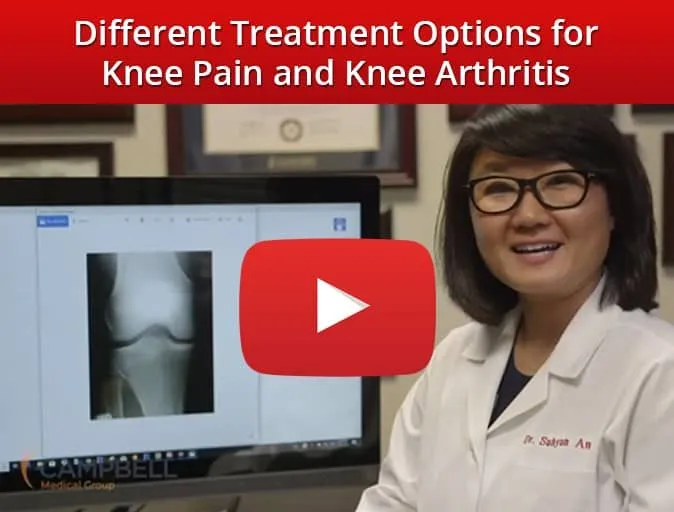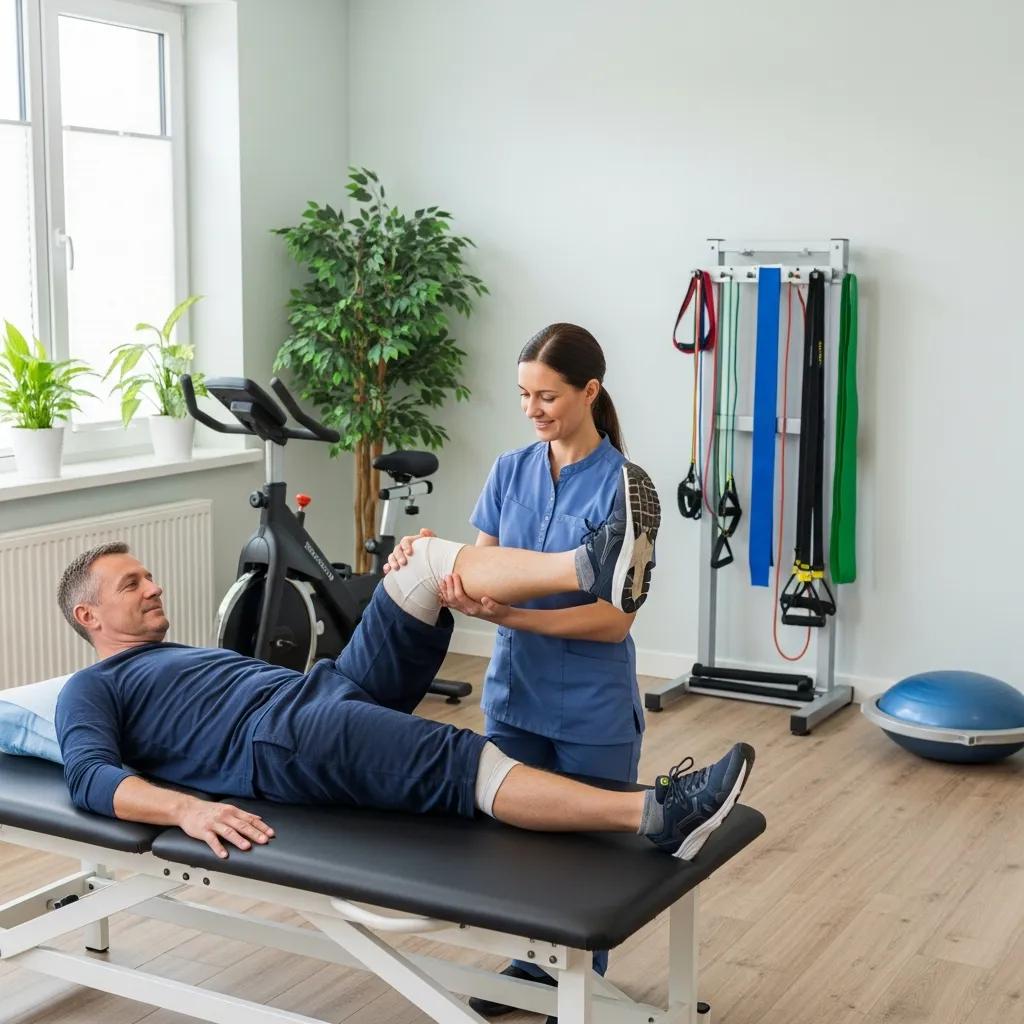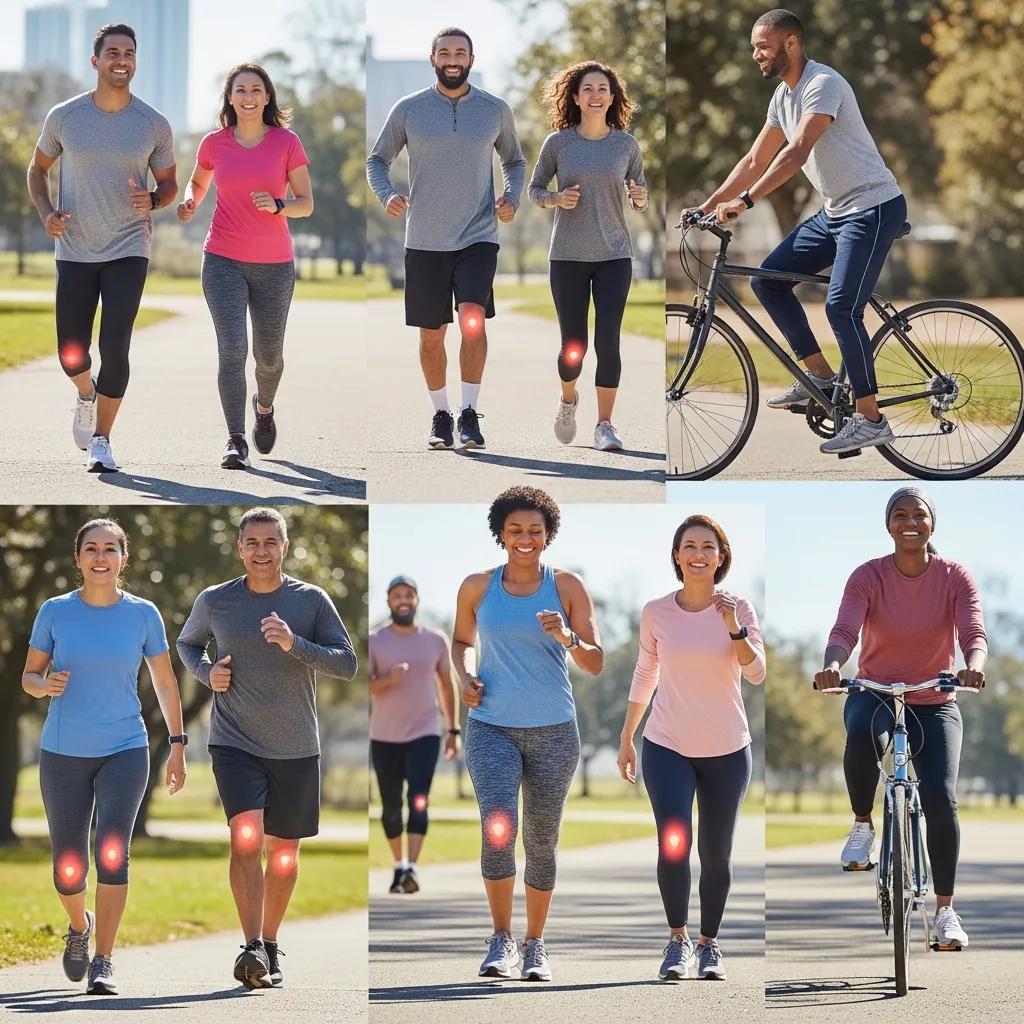
Regenerative Treatments for Knee Pain: Effective Non-Surgical Solutions for Pain Relief and Cartilage RepairRevolutionary Knee Pain Solutions
Chronic knee pain affects over 25 million adults in the U.S., often limiting mobility and quality of life, and regenerative medicine offers innovative, non-surgical solutions to restore joint health. This guide explains how platelet-rich plasma (PRP) and stem cell injections harness growth factors and progenitor cells to reduce pain, improve function, and stimulate cartilage repair. You will discover how these therapies work, the conditions they treat, procedural steps and recovery expectations, clinical effectiveness, financial considerations, patient candidacy, and alternative options to knee replacement surgery. Whether you’re researching regenerative injections, weighing costs, or comparing non-surgical strategies, this overview maps every critical aspect of knee pain regeneration.
What Are Regenerative Knee Injections and How Do They Work?
Regenerative knee injections combine autologous cells or blood components with targeted delivery to reduce inflammation, promote tissue repair, and improve joint function. These treatments leverage concentrated platelets or stem cells loaded with growth factors to orchestrate healing processes within osteoarthritic or injured knee tissues. Core therapies include PRP injections, which concentrate platelet-derived growth factors, and stem cell treatments, which deliver mesenchymal progenitors to damaged cartilage and synovium.
What is Platelet-Rich Plasma (PRP) Therapy for Knee Pain?
Platelet-rich plasma therapy isolates a high concentration of growth factors from a patient’s own blood and injects them into the knee joint to reduce pain and support cartilage health. After drawing venous blood, a centrifuge separates platelets and plasma from red cells, yielding a fluid rich in PDGF, TGF-β, and VEGF that modulate inflammation and stimulate cell proliferation. For example, patients often experience reduced stiffness within weeks as platelet-derived cytokines recruit reparative cells to damaged cartilage, laying the groundwork for improved mobility.
How Does Stem Cell Treatment Promote Knee Osteoarthritis Healing?
Stem cell therapy harvests mesenchymal stem cells (MSCs) from bone marrow or adipose tissue and injects them into the knee joint to differentiate into cartilage cells and secrete anti-inflammatory factors. These MSCs release exosomes and interleukin-10 that downregulate inflammatory pathways while offering chondrogenic potential to regenerate worn cartilage surfaces. By promoting local repair and modulating immune responses, stem cell injections can improve pain scores and functional performance in osteoarthritic knees.
What Biological Components Drive Tissue Regeneration in the Knee?
Regenerative injections rely on a combination of platelets, progenitor cells, and bioactive proteins that coordinate healing events and matrix remodeling within joint tissues.
| Component | Role | Effect |
|---|---|---|
| Platelets | Source of growth factors | Stimulate cell proliferation and angiogenesis |
| Mesenchymal Cells | Progenitors for cartilage and bone | Differentiate into chondrocytes and osteoblasts |
| Growth Factors | Signaling molecules (PDGF, TGF-β) | Modulate inflammation and tissue repair |
| Cytokines | Immune modulators (IL-10) | Suppress inflammatory mediators |
These elements work in concert to replace damaged matrix, reduce synovial inflammation, and support new cartilage deposition, preparing the joint for improved load-bearing capacity.
How Do Regenerative Injections Stimulate Cartilage Regeneration?
Regenerative injections deliver bioactive cells and proteins that bind to receptors on chondrocytes and synoviocytes, triggering gene expression for extracellular matrix synthesis and inhibiting catabolic enzymes. PRP releases TGF-β to upregulate collagen II production, while MSCs secrete exosomes carrying microRNAs that promote chondrogenesis. Through these mechanisms, regenerative therapies shift the joint environment from degradation toward rebuilding healthy cartilage layers and stabilizing the meniscus and ligaments.
Which Knee Conditions Can Be Treated with Regenerative Therapies?
Regenerative knee injections address a spectrum of degenerative and traumatic conditions by harnessing endogenous healing pathways to restore joint integrity and reduce pain.
How Does Regenerative Medicine Address Knee Osteoarthritis Symptoms?
Regenerative injections for knee osteoarthritis alleviate pain, improve stiffness, and decrease inflammation by delivering growth factors and anti-inflammatory mediators directly into the synovial cavity. By downregulating IL-1β and MMP activity, PRP and stem cell therapies protect remaining cartilage and enhance synovial lubrication, resulting in functional gains such as improved walking distance and reduced reliance on analgesics.
Can PRP and Stem Cells Treat Meniscus Tears and Tendon Injuries?
Yes, PRP and MSC injections can accelerate healing in meniscal tears and patellar tendon injuries by supplying localized growth factors, recruiting reparative cells, and enhancing collagen synthesis. For example, PRP-treated meniscal tears often show faster tissue integration, while stem cell injections in tendinopathies reduce extracellular matrix degradation and strengthen tendon fibers, leading to faster return to activity.
What Are the Signs That Indicate Need for Regenerative Knee Treatment?
Patients may consider regenerative injections when they experience persistent knee pain during daily activities, stiffness lasting over 30 minutes in the morning, swelling after mild exertion, and imaging showing grade I–III cartilage lesions. A lack of response to NSAIDs, corticosteroid injections, or physical therapy also suggests suitability for biologic interventions to promote longer-term repair.
Regenerative Knee Treatments: Non-Surgical PRP & Stem Cell Relief
Understanding each step from preparation through rehabilitation ensures realistic expectations and optimal outcomes for regenerative injections.
What to Expect During a PRP Injection for Knee Pain?
A PRP injection session begins with a blood draw from the patient’s arm, followed by centrifugation to concentrate platelets and plasma. The clinician then locates the injection site using ultrasound guidance and introduces a small volume of platelet concentrate into the joint space. Discomfort is minimal, and patients often return home the same day, applying ice and avoiding strenuous activity for 48 hours.
How Is Stem Cell Therapy Administered for Knee Osteoarthritis?
Stem cell therapy involves harvesting bone marrow aspirate or adipose tissue under local anesthesia, processing the sample to isolate MSCs, and injecting the cell concentrate into the knee under imaging guidance. The entire procedure takes 2–3 hours, with patients monitored briefly afterward before discharge. Weight-bearing and physical activity are limited for one to two weeks to allow cell engraftment.
What Are Typical Recovery Times and Post-Treatment Care?
Recovery from regenerative injections typically spans 6–12 weeks, with most pain relief and functional improvements appearing between 4–8 weeks as tissue remodeling occurs. Physical therapy emphasizing range of motion and gradual strengthening begins at week 2, while low-impact activities can resume by week 6. Long-term joint homeostasis depends on adherence to rehabilitation protocols and lifestyle modifications.
How Effective Are Regenerative Treatments for Knee Pain?
Clinical research demonstrates varying degrees of efficacy for PRP and stem cell therapies, with most studies indicating meaningful symptom relief and functional gains.
What Does Research Say About PRP Therapy Efficacy?
Randomized trials show that PRP injections can deliver 30–50 percent greater pain reduction and functional improvement compared to corticosteroids or hyaluronic acid at 6 months. Studies report sustained quality-of-life gains, with PDGF-rich plasma fostering cartilage marker expression in osteoarthritic knees.
Efficacy and Safety of Platelet-Rich Plasma Injections for the Treatment of Osteoarthritis: A Systematic Review and Meta-Analysis of Randomized Controlled Trials
A 2023 meta-analysis of 24 randomized controlled trials found that PRP injections significantly improved Visual Analog Scale (VAS) pain scores and Knee Injury and Osteoarthritis Outcome Score (KOOS) in patients with knee osteoarthritis, with improvements exceeding minimal clinically important differences at various follow-up points.
This research supports the article’s claim regarding the clinical effectiveness of PRP therapy in reducing pain and improving function in knee osteoarthritis.
How Does Stem Cell Therapy Compare in Pain Reduction and Function?
Stem cell injections yield similar or slightly superior improvements in pain relief and knee function compared to PRP, with MSCs providing additional anti-inflammatory effects. Evidence suggests that MSC therapy can achieve a 40–60 percent improvement in standardized knee scores at 12 months, highlighting its regenerative potential.
Effect of Mesenchymal Stromal Cells Transplantation on the Outcomes of Patients with Knee Osteoarthritis: A Systematic Review and Meta-Analysis
A 2023 systematic review and meta-analysis of 16 studies involving 875 patients concluded that stem cell transplantation was safe and effective for knee osteoarthritis treatment. It led to significant reductions in patient-reported pain from the third month onwards and effective recovery of knee joint function, particularly with fat-derived stem cells.
This citation directly supports the article’s discussion on the efficacy and regenerative potential of stem cell therapy for knee osteoarthritis, including improvements in pain and function.
What Are the Long-Term Benefits and Safety Profiles?
Long-term data indicate durable pain relief lasting 12–24 months after regenerative treatment, with low rates of adverse events such as transient swelling or mild infection. Both PRP and stem cell therapies maintain safety profiles comparable to standard injections, with no serious complications reported in major trials.
What Are the Costs and Insurance Coverage for Regenerative Knee Injections?
Financial considerations often influence treatment decisions, as most regenerative injections are self-pay today.
How Much Do PRP and Stem Cell Treatments Typically Cost?
| Treatment Type | Typical Cost per Session | Insurance Coverage |
|---|---|---|
| PRP Injections | $500 – $2,000 | Rarely covered |
| Bone Marrow MSC | $1,500 – $4,000 | Generally out-of-pocket |
| Adipose-Derived MSC | $2,000 – $5,000 | Not covered |
These costs reflect preparation kits, imaging guidance, and clinical expertise required for optimal safety and efficacy.
Does Insurance Usually Cover Regenerative Knee Therapies?
Most insurers categorize regenerative injections as experimental, resulting in little to no coverage. However, some self-funded health plans may offer partial reimbursement for PRP under musculoskeletal benefit riders. Patients often use Health Savings Accounts (HSAs) to offset out-of-pocket expenses.
Are There More Affordable Non-Surgical Knee Pain Relief Options?
For those seeking cost-effective alternatives, corticosteroid injections, hyaluronic acid viscosupplementation, and structured physical therapy programs deliver symptom relief at lower prices. Lifestyle modifications—such as weight management, targeted exercise, and bracing—also reduce joint stress and complement regenerative strategies.
Who Is an Ideal Candidate for Regenerative Knee Treatments?
Selecting the right patient profile ensures higher success rates and satisfaction with biologic injections.
What Patient Factors Influence Treatment Success?
Ideal candidates are typically under 65, with mild-to-moderate osteoarthritis (grades I–III), BMI below 30, and absence of advanced bone deformities. Good overall health, non-smoking status, and realistic expectations further enhance positive outcomes.
When Should Surgery Be Considered Instead of Regenerative Therapy?
Surgical referral becomes necessary when patients exhibit severe joint collapse (grade IV), significant bone-on-bone contact, mechanical instability, or multi-ligament damage unresponsive to conservative and regenerative approaches.
How Can Patients Prepare for Regenerative Knee Procedures?
Preparation includes discontinuing anti-inflammatory medications one week prior, optimizing nutrition to support healing, and completing pre-procedure labs. A thorough consultation to review imaging, discuss goals, and outline rehabilitation sets the stage for successful treatment.
What Are the Alternatives to Knee Replacement Surgery?
Patients seeking to delay or avoid knee replacement can pursue a range of non-surgical options that preserve joint anatomy and function.
How Do Hyaluronic Acid and Corticosteroid Injections Compare?
Corticosteroids rapidly reduce inflammation and pain but offer relief for only 4–8 weeks and may accelerate cartilage loss with repeated use. Hyaluronic acid injections lubricate the joint and improve shock absorption, providing symptom relief for up to 6 months, though without regenerative potential.
What Role Does Physical Therapy Play in Knee Pain Management?
Targeted physical therapy strengthens peri-articular muscles, improves joint stability, and enhances proprioception to reduce load on damaged cartilage. A structured exercise regimen fosters mobility and complements biologic or injection treatments to prolong functional gains.
How Can Weight Management Support Knee Health and Pain Relief?
Losing just 5–10 percent of body weight can decrease knee joint load by up to 50 percent per step, reducing pain and delaying disease progression. Nutritional counseling and regular low-impact exercise work synergistically with regenerative therapies to protect knee cartilage.
The Critical Role of Physical Activity and Weight Management in Knee and Hip Osteoarthritis: A Narrative Review
A 2024 review highlights that for patients with osteoarthritis who are overweight or obese, weight loss significantly improves pain, stiffness, and function. It notes that every one pound of weight lost can result in a four-pound reduction in knee joint load, and a 10% weight loss leads to improved pain, function, and quality of life. Additionally, a 2025 meta-analysis found that knee braces, hydrotherapy, and exercise are effective non-drug therapies for knee osteoarthritis, reducing pain and improving mobility.
This research reinforces the article’s recommendations for non-surgical alternatives like weight management and physical therapy, emphasizing their significant benefits in reducing joint load, pain, and improving function.
What Emerging Regenerative Therapies Are on the Horizon?
Innovative approaches under clinical investigation include exosome-enriched plasma, gene-edited MSCs, and scaffold-based cartilage implants that provide structural support while delivering bioactive factors. These next-generation treatments aim to further enhance cartilage regeneration and long-term joint preservation.
Regenerative knee injections offer minimally invasive, biologically driven alternatives to surgery for pain relief, tissue repair, and functional restoration. By understanding mechanisms, candidacy criteria, procedural steps, and cost considerations, patients can make informed choices to improve joint health. Consult a specialized orthopedic or sports medicine provider to determine whether PRP, stem cell therapy, or complementary non-surgical options best suit your knee condition and recovery goals.
Frequently Asked Questions
What are the potential side effects of regenerative knee treatments?
While regenerative knee treatments like PRP and stem cell injections are generally considered safe, some patients may experience mild side effects. Common reactions include temporary swelling, bruising at the injection site, and mild pain. In rare cases, infections or allergic reactions can occur. It’s essential to discuss any concerns with your healthcare provider before undergoing treatment to ensure you understand the risks and benefits associated with these procedures.
How long do the effects of regenerative knee treatments last?
The duration of relief from regenerative knee treatments can vary significantly among patients. Generally, many individuals experience pain relief and functional improvement lasting between 12 to 24 months. Factors influencing longevity include the severity of the knee condition, the patient’s overall health, and adherence to post-treatment rehabilitation protocols. Regular follow-ups with your healthcare provider can help monitor progress and determine if additional treatments are necessary.
Can regenerative treatments be combined with other therapies?
Yes, regenerative treatments can often be combined with other therapeutic approaches to enhance overall effectiveness. For instance, physical therapy is frequently recommended alongside PRP or stem cell injections to improve strength and mobility. Additionally, patients may use anti-inflammatory medications or lifestyle modifications, such as weight management, to support recovery. Always consult your healthcare provider to create a comprehensive treatment plan tailored to your specific needs.
Are there any age restrictions for receiving regenerative knee treatments?
While there are no strict age restrictions for regenerative knee treatments, ideal candidates are typically under 65 years old. This is because younger patients often have better healing potential and may respond more favorably to these therapies. However, older patients with mild to moderate osteoarthritis may still benefit from these treatments. A thorough evaluation by a healthcare professional can help determine suitability based on individual health factors rather than age alone.
What lifestyle changes can enhance the effectiveness of regenerative treatments?
To maximize the benefits of regenerative knee treatments, patients should consider adopting several lifestyle changes. Maintaining a healthy weight is crucial, as even modest weight loss can significantly reduce knee joint stress. Engaging in low-impact exercises, such as swimming or cycling, can improve joint function and strength. Additionally, a balanced diet rich in anti-inflammatory foods may support healing. Consulting with a nutritionist or physical therapist can provide personalized strategies to enhance treatment outcomes.
How do I choose the right provider for regenerative knee treatments?
Selecting the right provider for regenerative knee treatments is essential for achieving optimal results. Look for a specialist with extensive experience in regenerative medicine, particularly in knee treatments. Verify their credentials, read patient reviews, and inquire about their success rates. A good provider will conduct a thorough assessment, discuss treatment options, and tailor a plan to your specific needs. Trust and communication are key factors in ensuring a positive treatment experience.









